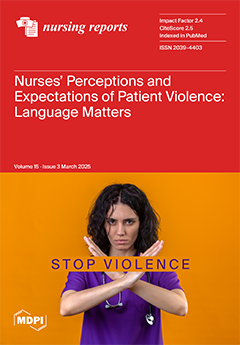Background: The psychological well-being of university students significantly impacts their academic performance and future professional preparation. The aim of this study is to analyze the relationships between perceived stress, self-esteem, and learning strategies in university students enrolled in Nursing and Obstretics degree programs, in order to understand the impact of psychological well-being on their study abilities.
Method: This study is observational cross-sectional, using non-probabilistic convenience sampling. The study involved students enrolled in Nursing and Obstetrics courses at the University of Salerno. A standardized self-reported questionnaire will be used.
Results: 331 students (82.75%) participated voluntarily. Correlations show significant relationships consistent with psychological literature. Higher self-esteem correlates with lower perceived stress (r = −0.325,
p < 0.01), better information elaboration (r = 0.156,
p < 0.01), and higher metacognitive awareness (r = 0.123,
p < 0.05), but negatively with organizational strategies (r = −0.150,
p < 0.01) and self-evaluation frequency (r = −0.153,
p < 0.01). Perceived stress correlates positively with organizational strategies (r = 0.180,
p < 0.01) and self-evaluation frequency (r = 0.178,
p < 0.01), suggesting stress may drive compensatory strategies. Multiple regression analyses showed that self-esteem was a significant positive predictor of information elaboration strategies (β = 0.49,
p = 0.05). Both self-esteem (β = −0.52,
p = 0.01) and perceived stress (β = −0.74,
p = 0.01) were significant negative predictors of structured learning strategies, suggesting that higher levels of stress and self-esteem are associated with a reduced use of planned organizational approaches. The models explained a substantial proportion of variance, with adjusted R
2 values of 0.52 for elaboration and 0.63 for strategy components.
Conclusions: These results emphasize the need for interventions to enhance learning strategies and stress management among students.
Full article






